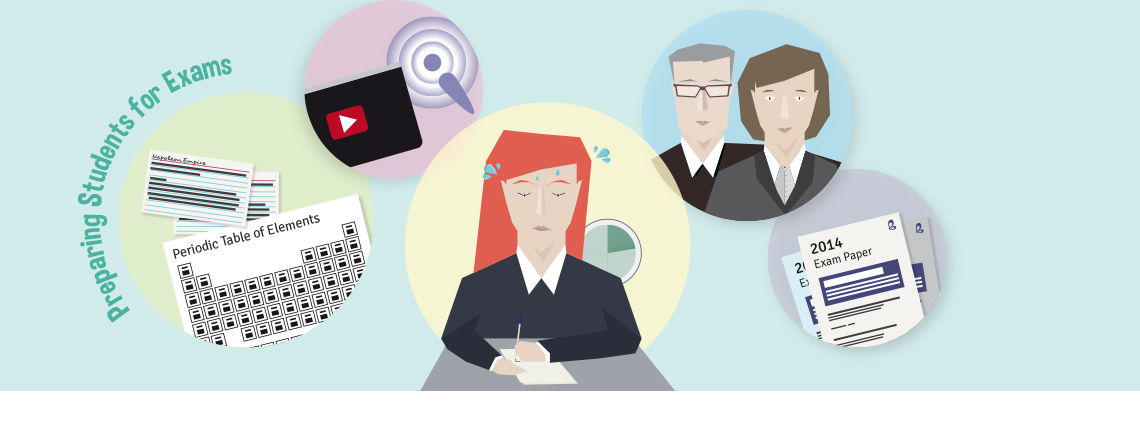So, you’ve covered everything on the syllabus – now all you need to do is get your pupils to morph from class-based learners to exam-answering experts. Simple!
Being the pragmatist you are, you know that your pupils now not only need to know and understand what you have covered, but they also need to be able to apply it in a very short amount of time, with brevity and clarity, to any given question they may be asked. In short, they need to be familiar with it. So how do you go about this? Here are a few tips I have found helpful along the way.
Parental Control
One of the best things we as teachers can do is to get our pupils’ parents on board. Pupils will often tell their parents they have no work or revision to do, and parents often have no real idea about what is and what is not being set at school. In addition to this, parents have not just sat through two years of GCSE lessons in your subject, and so many of them will have little idea if what their child is producing is right or not.
One way around this is to write to parents and include a generic parent-friendly mark scheme for your subject, including some model answers, and set pupils standard exam questions that the parents then need to mark. This helps parents take a level of responsibility for their own child’s revision: it lets them know what should be being done and how it should be done. It also helps deal with subject knowledge and exam technique: if the parent can’t understand their child’s answer, the examiner probably won’t.
iGeneration
While the days of pen and paper are not quite over, today’s pupils seem to be increasingly dependent on e-resources. Rather than shying away from this, we can instead embrace it by giving pupils more opportunity to learn in the way they know best. Examples of this could be short informative videos that are placed on YouTube or the school’s VLE.
I have recorded short (2–3 minute) podcasts (you could have students record them) outlining each section of the syllabus, together with a brief description of how students might answer a question if they’re asked one in the exam. Students then download these from the VLE to their phones/devices and can listen to them whenever they want. It is also worth investigating a few online revision sites – and even apps – that pupils can download to revise your subject.
Pimp Your Resources
Whatever the arguments surrounding learning styles, there’s no doubt that different pupils prefer to learn in different ways. A simple tactic to encourage pupils to utilise varying learning skills is to use a nine square grid.
Create nine mini revision tasks, make some visual tasks such as mind maps or posters, or have pupils explain complex issues using no more than five pictures and five words – this is a great flipped learning task, as you can then ask pupils to present their issues to the rest of the class in the next lesson; this also builds up visual reminders and makes them think about the issue in an in-depth way as they consider how they can present it.
Make some tasks auditory – for example, listening to a short podcast and answering an exam question based on what they have just listened to. Some tasks can be based around simple research, summarising information, or the use of command words from your exam board such as ‘explain’, ‘examine’ or ‘outline’. Place each of the tasks in one of the squares on the grid, arranging them so they do not repeat a learning style in any one row of three vertically, horizontally or diagonally. In the lesson, pupils can choose any row of three to complete (timed tasks maintain focus) and you can either set the remaining tasks as homework or for future lessons.
Virtual Room
Visual reminders around your room may help pupils remember important information that they can draw upon in the exam. Above my board I have a colour scale showing different denominations within Christianity, ranging from liberal through conservative to fundamentalist, with each denomination having its own tab stuck on to it.
Each corner of my room has specific colour-coded quotes or brief reminders of evidence they need for questions in that unit. Images are often better for students than words in recalling that vital information at that vital moment.
Past Papers
When all is said and done, on the big day itself pupils will not be asked to draw a mind map or play Blockbusters; they will need to answer a certain number of questions in a certain amount of time.
There is no substitute for past papers as a way of practising for the real thing. As the exam date gets nearer, these need to be used more often. Marking can be parental, peer- or teacher-led. Pupils should be able to identify their own WWWs (what went well) and EBIs (even better if) and use these as targets.
Time Trials
There is no hiding from it: time is relative and seems to vanish inside an exam hall. It is no good gaining 100% from each answer if you only answer half the questions.
When practising with past paper questions, ask pupils to identify how long they should spend on a question such as this (e.g. a minute a mark), ask them to write the answer, stop when the time is up, write the time in the margin, then complete the question if it still needs to be completed. They then need to consider how they can rewrite the answer in full to fit into the time allowed. SR


